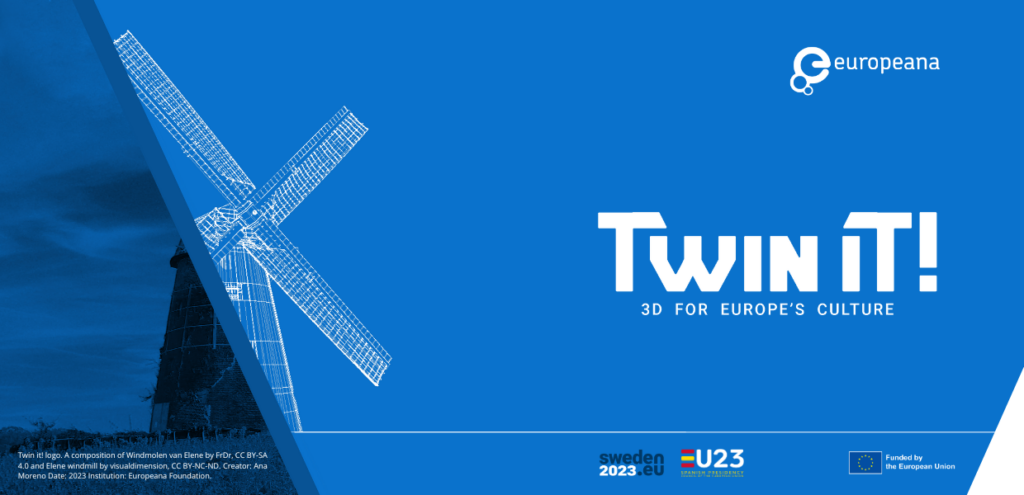The picture stone, Stora Hammars I, is dated from the 8th – 10th centuries and was chosen by Sweden as the Twin it! submission and very first 3D contribution to the data space as it is unique, well-visited and fragile from a conservation point of view. The picture stone is today located at the Bunge Museum on Gotland and is part of Gotland Museum’s and Stockholm University’s picture stone project ‘Ancient Images’, a digitisation project of all the Gotlandic picture stones.
The 3D digisation process
As part of the ‘Ancient Images’ project, the Gotlandic picture stone was documented using high resolution photogrammetry.
The photogrammetric recording was made with a custom medium format 150 megapixel metric camera from Alpa and PhaseOne and was used in conjunction with precise scale-bars made from thermally stable Invar (an iron alloy). One benefit of using medium format lenses is the ability to use faster shutter speeds to overpower the sun using strobes. The 3D models captured in this project have a resolution of 0.075mm and an average accuracy of 0.06mm, while the scale error is 0.02mm on average.
The fieldwork was relatively quick thanks to the high resolution camera which allowed the team to achieve high resolution models while capturing far fewer photos than would be required with typical camera resolutions.
Having a quick digitisation method was very useful since the picture stones recorded in this project are often located in difficult terrain. Photogrammetry allows far more flexibility than laser or structured light scanning, with the added benefits of smaller raw data sizes and intrinsic colour data which is critical for conservation.
The benefits of 3D digitisation
‘We foresee clear benefits from 3D digitisation of Gotland’s cultural heritage. Through this process, we can make it available in detail to people all over the world, or to people who cannot physically get to Gotland. 3D models can also create opportunities for research and education, as well as making it easily accessible to the public,’ says Johanna Pietikäinen, head of department at Gotland Museum.
She adds: ‘From a preservation perspective, 3D digitised cultural heritage plays an important role in the preparation for a possible social or environmental crisis. In the case of the picture stone from Stora Hammars I, the 3D model is important as the stone is exposed to the test of time and the elements – slowly the carvings on the stone are fading away. With 3D techniques, we can preserve what is not visible to the naked eye any longer.’
Discover the 3D model
The 3D model of the picture stone Stora Hammars I is available via SOCH (Swedish Open Cultural Heritage) and can also be found through Europeana.eu. The 3D model can also be directly accessed and downloaded on the Ancient Images project web.
Although SOCH has supported 3D models for several years, this is the first time a heritage institution in Sweden has published such an object to the aggregator (SOCH), through which the Swedish National Heritage Board also has provided it to Europeana. We look forward to linking in many other such 3D objects in the future!
Source link : https://pro.europeana.eu/post/sweden-shares-their-twin-it-3d-for-europe-s-culture-story
Author :
Publish date : 2024-04-25 07:00:00
Copyright for syndicated content belongs to the linked Source.
